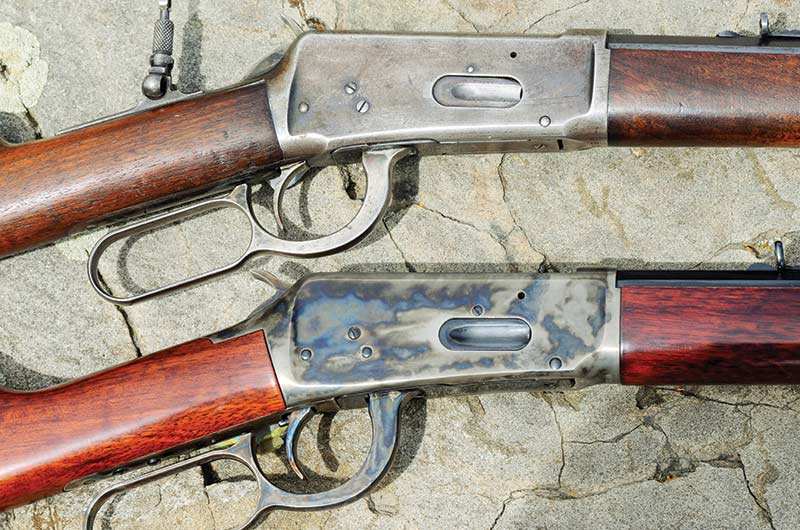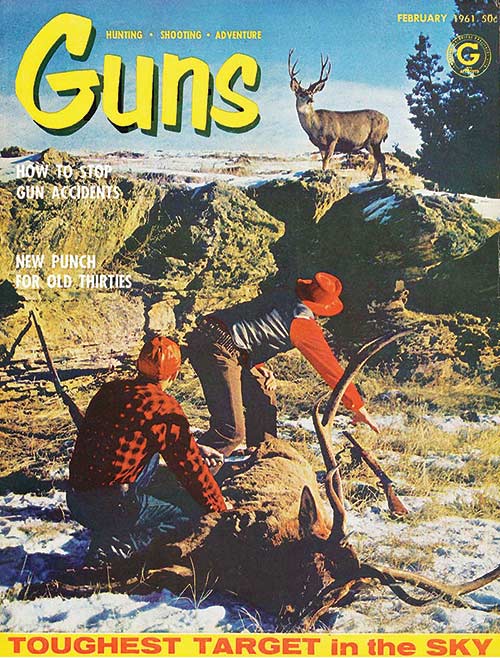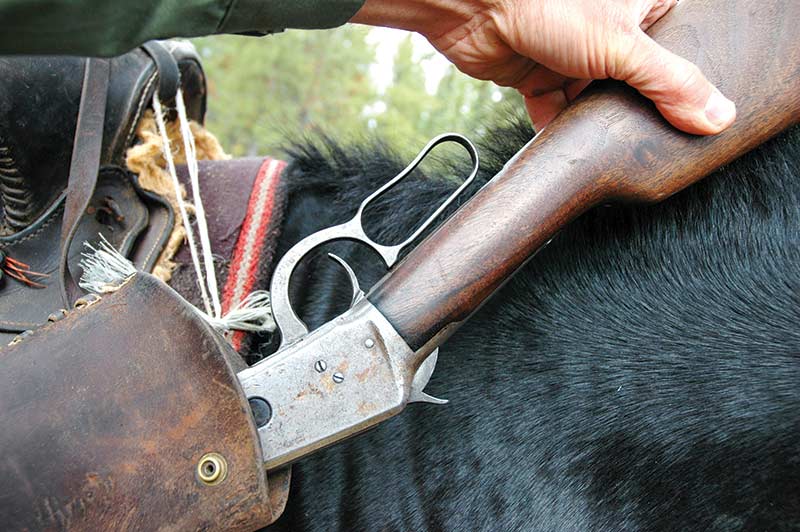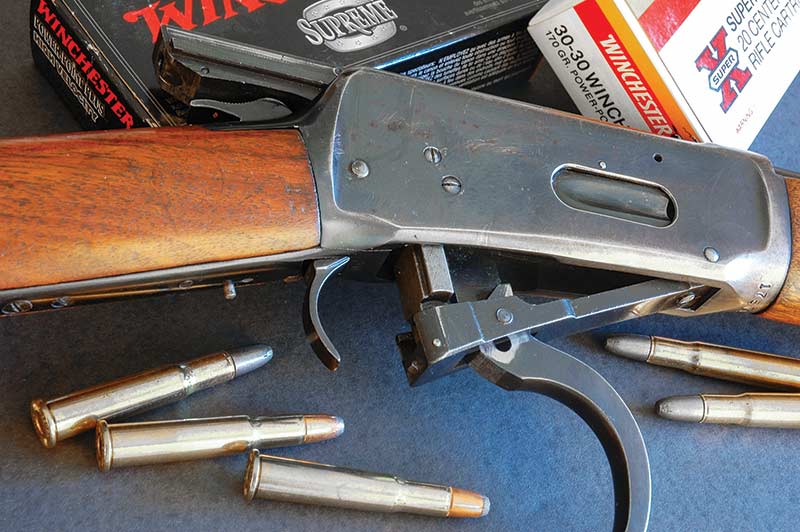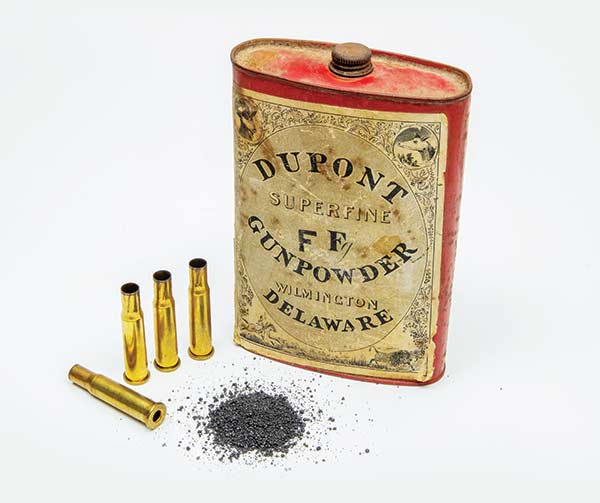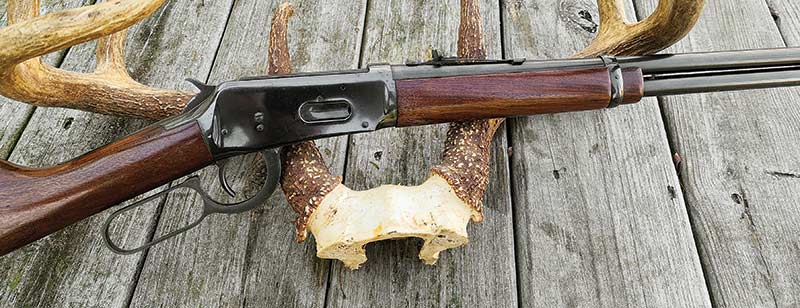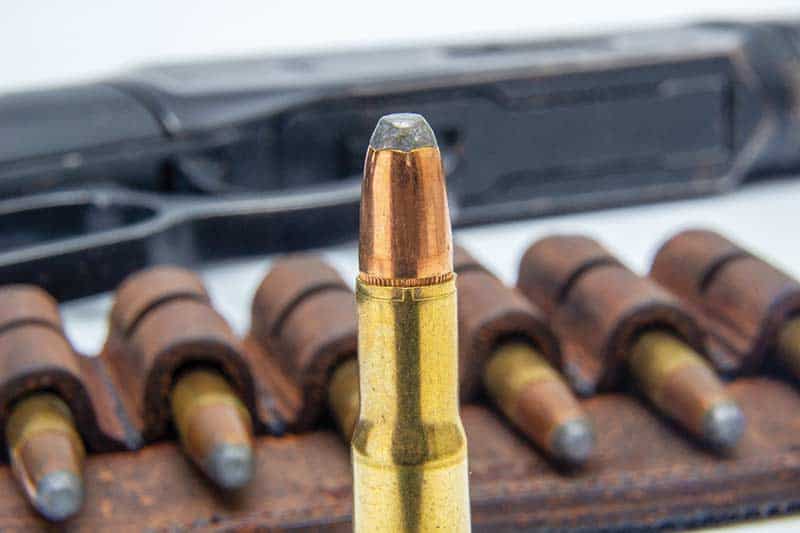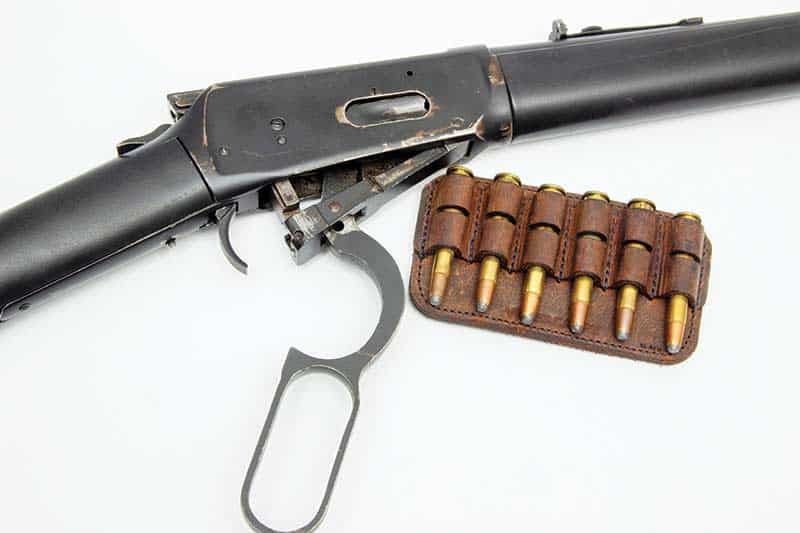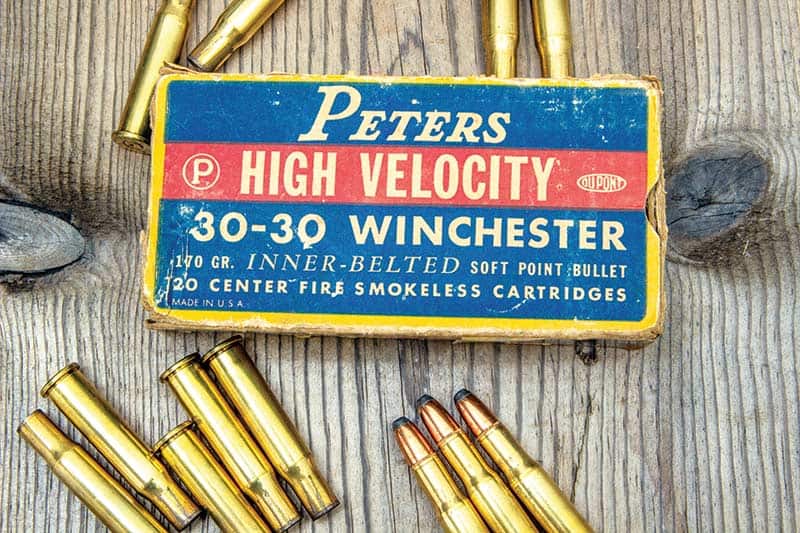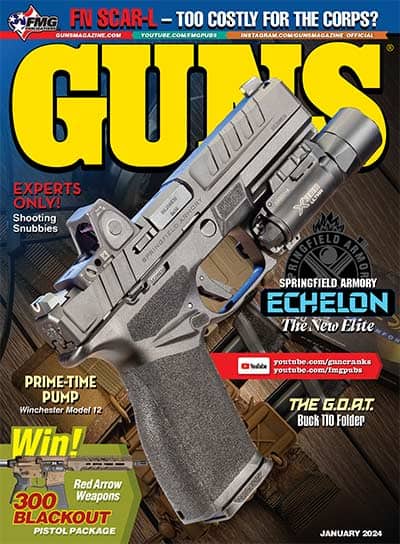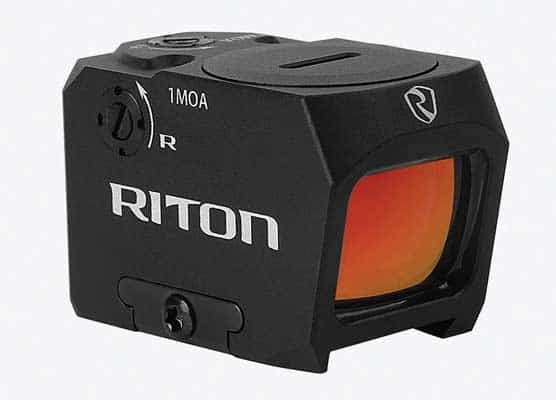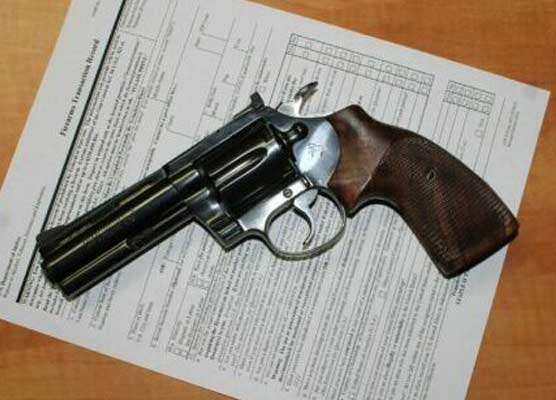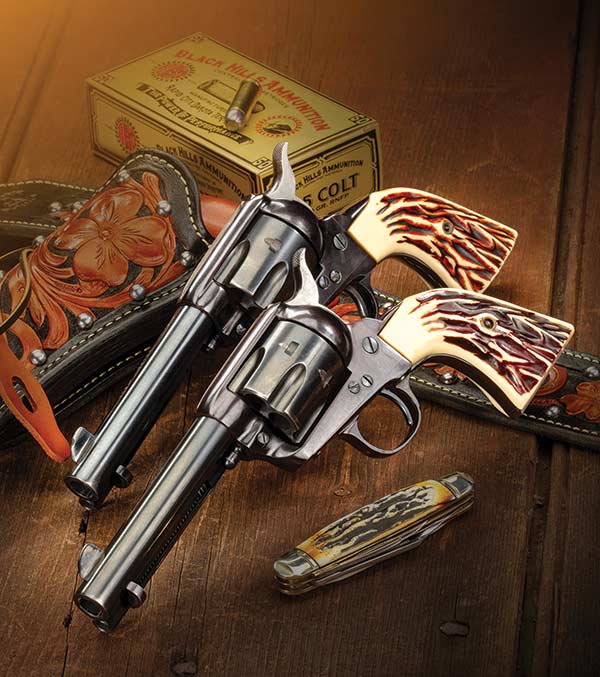Winchester Model 94 Memories
Red Wool And Blued Steel In The Mists …
“Boy, hand me that rifle.” He pronounced it “ryeful” in his deep, raspy voice. I eased the battered old ’94 over the bale of hay between us and watched in fascination as he flipped up the rear sight and ticked it up to 200 yards with a gnarled thumbnail. He snuggled into the rifle on top of the bales in front of him and I knew the little fork horn buck at the edge of the field was in big trouble. I am not sure if I ever saw him miss anything with his old Winchester.
Teacher & Student
I learned something every time I watched him shoot. Being a kid — a sponge for learning things I was interested in — I soaked it all in. Almost by osmosis, I absorbed his fit to the gun, hand position, finger placement on the trigger and breathing. The trigger was not a two-stage but he treated it as one, carefully bringing it back a little to the “wall” he knew was there. This was when his real trigger squeeze began. Once the sights were aligned where he wanted them, the trigger was pushed without hesitation. Not a jerk, but a steady pull to get the job done. This guy was all about getting the job done.
It was as still as a tomb on the November morning and when I heard him softly exhale, I let my eyes go back to the little buck munching white oak acorns. The deer was probably closer to 175 than 200 yards, and at the crash of the .30-30 he stiffened and fell over as if hit by lightning. Raymond stood up and muttered something like “Uh-huh” under his breath.
Now he was thinking about the skinning and butchering process on this deer. Nothing would be wasted — this was like going to the meat department in the grocery store for him. The Winchester Model 94 rifle he used for this venture was as utilitarian as he was. Simple, practical, no frills and absolutely all you needed to get the job done.
The Ideal
No other rifle in history would become such an archetype, especially for deer hunting, as the Winchester Model 94. Indeed, for several decades if someone referred to a “deer rifle,” to most hunters, this meant the tried-and-true lever-action Model 1894. If you had a dad, a great-grandad or even a great-great-grandad who hunted deer before passing, it’s quite possible you have a Winchester Model 1894 in a gun safe or closet somewhere. Over 7 million Model 94s were produced and sold.
The Model 94 was conceived by the gun genius John Moses Browning. Sometimes it seems every well-known firearm from the past century came from the work of Mr. Browning. Browning may be best known for inventing automatic and semi-automatic firearms (the Colt 1911 pistol and the Browning Auto 5 shotgun to name only two) but the ’94 has been called the ultimate lever-action design by more than one firearms historian.
Originally the Model 1894 was chambered to fire the .38-55 and .32-40 Winchester, both metallic cartridges loaded with black powder. The stars lined up for the Model 94 as soon it was chambered in a smokeless round, the .30 Winchester Center Fire (WCF) which soon came to be known as the .30/30 Winchester. No doubt part of the success of the Model 94 lay in the turn of events where this rifle was the first made by Winchester to handle the new smokeless cartridges. In 1899 the Model 94 also became available in the .32 Winchester Special, a very sweet little cartridge which is now a footnote.
The Model 94 was produced continuously by Winchester from 1894 through 1980 when the production of the gun was taken up by the U.S. Repeating Arms Company until 1989. Reproductions of the rifle are now made in Japan and imported by Browning Arms Company.
While the Model 94 saw service in both world wars with various divisions of the U.S., French, British and Canadian armies, it was in the American deer woods where the 94 achieved its greatest fame. East of the Big Muddy where dense brush, close-range shots and fast moving whitetails are the usual drill, the Winchester came into its own. Light to carry, a carbine-like length and the ability to get off fast follow-up shots made it the deer hunter’s favorite for decades.
Changes
In 1964 Winchester made the decision to lower manufacturing costs on the ’94 and this led to several changes in the parts and materials. While the outward appearance of the rifle was much the same — aside from the fact the receiver on the new rifles did not accept the deep blued finish as well as previous models — the new version was accurate and functioned as well as before. However, Winchester fans saw the change as heresy. Gun buyers now noted a difference in rifles made “pre-64” and those made after. Pre ’64 model Winchester 94s still bring premium prices compared to those manufactured later. Not surprisingly, the same goes for the Winchester Model 70 bolt-action.
Most people shoot a rifle more accurately with a telescopic sight than with open sights. Even though mountains of deer were taken with the ’94 and open sights, as quality affordable scopes became more and more common, hunters wanted an optic on their rifle and here is where the ’94 had a problem in design.
The rifle had always ejected the spent cartridge from the top of the receiver; this sent the brass straight up and usually over the shooter’s shoulder. There was no problem as long as we were using the open sights, but if you wanted a scope installed, Big Problem. Side-mount scopes could be employed or a scope could be installed farther forward on the barrel. There are actually more “guide mount” type scopes available now that will work in this fashion. Early in its history, the most common upgrade to the 94 was the addition of a peep sight on the rear of the receiver and Winchester had mounting holes pre-drilled early on.
In 1982 Winchester changed the design of the Model 94 and allowed for an angle ejection of the brass and thereby the mounting of a scope on top of the receiver. It was a good idea but it was too little, too late. In 1989, the U.S. Repeating Arms gave up the ghost and was sold to Belgium gun maker FN Herstal.
FN actually made some good changes in production methods on the Model 94 but they did something else Winchester Model 94 devotees saw as the end of civilization as we know it. Almost surely from the demands of their legal staff, in 1992 FN produced the Model 94 with a new crossbolt-style safety instead of the traditional half-cock hammer and the world has never been the same. Gun owners, hunters, gun writers and others loudly protested this abomination. FN later moved the safety to a much less obvious tang-mounted version and most of the fury was quieted.
Considerations
I’ve always had mixed feelings on the ’94 safety debacle. While I loved this old rifle as much as anyone, I have seen it involved in some dicey situations when it came to accidental discharge situations. The problem with the old design comes from when the lever is moved downward, the hammer is moved back into the cocked position. As the lever comes up, the new round is chambered and the rifle is ready to fire. This is how it should be unless the shooter has his finger still on the trigger. If he does, the rifle goes boom.
More than a few times I saw hunters with Model 94s have accidental discharges. This was usually while trying frantically to unload the rifle in a vehicle because they saw the game warden — me — approaching. Just in case you didn’t know, a high-powered rifle going off in a truck is extremely loud! Like many others I did not like the crossbolt safety on the ’94, but I could probably live with the later tang-mounted version.
Extinctions
Times change and the era of the Model 94, red plaid Woolrich hunting clothes and leather Bean boots laced up to the knee could not last forever, which is kind of a pity. More than anything else, the growing popularity of scopes on a deer rifle, and the problems associated with doing so on the early Model 94s led to the demise of this great old rifle.
My old rifle mentor, Raymond, didn’t change one bit. He continued to use an open-sighted Model 94 just as he had before. It could get him all the deer he needed, the occasional black bear when one got too close to his hog pen and various other varmints he thought needed shooting. He was a simple, practical man who lived close to the land on his rugged mountain farm and he used a rifle much like him, the Winchester Model 94.
